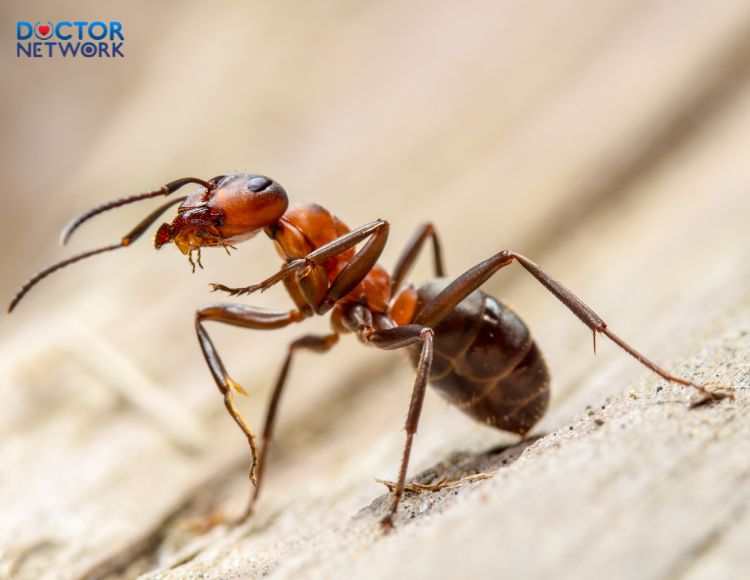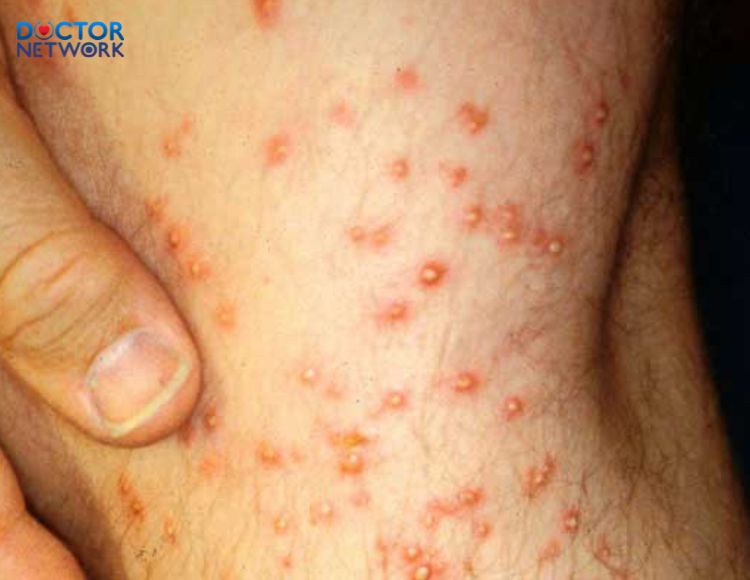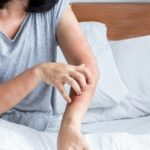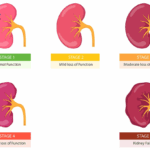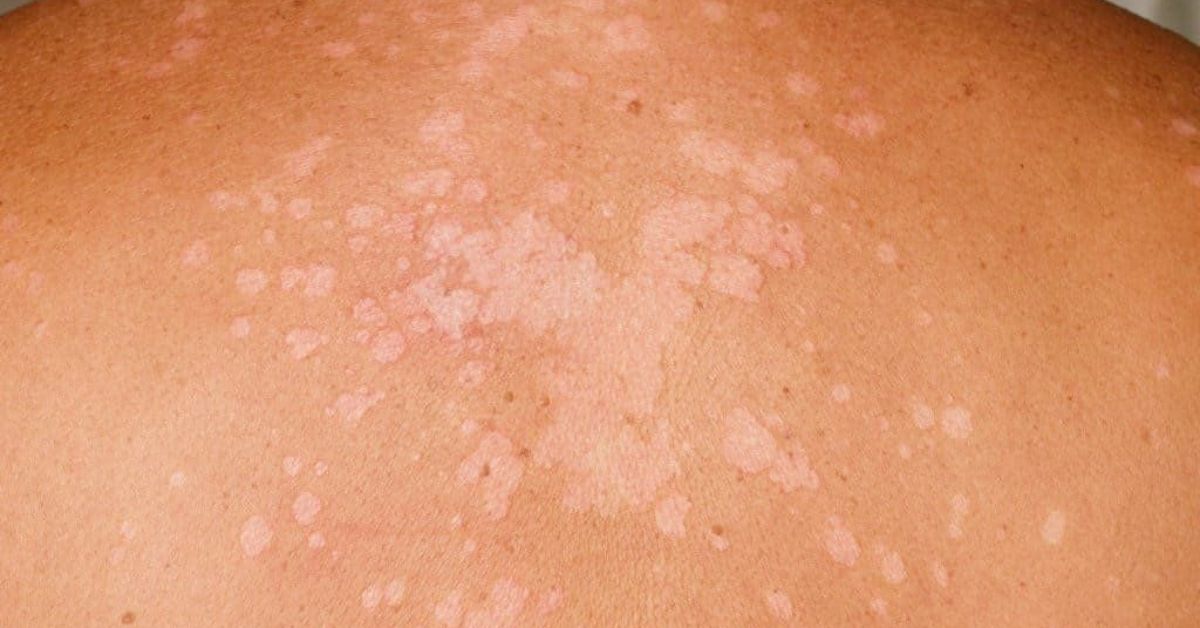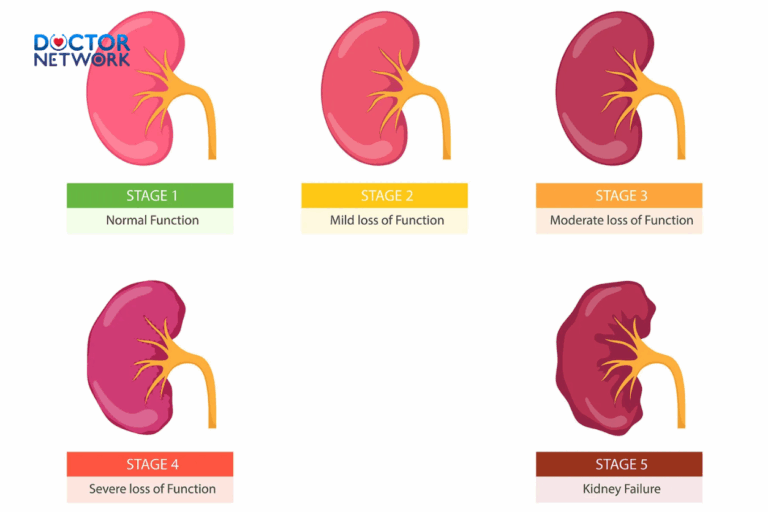Ant bites are common skin irritations that can range from mildly annoying to potentially dangerous. These tiny insects, found across the globe, can leave behind telltale marks on human skin when they feel threatened or disturbed. Understanding the signs of ant bites is crucial for proper identification, treatment, and prevention of complications. This comprehensive guide will explore the various aspects of ant bites, including their appearance, severity levels, potential allergic reactions, and effective treatment options.
Identifying Ant Bites
Common Signs of Ant Bites
Ant bites typically manifest with several distinctive symptoms:
- Redness: The affected area often becomes inflamed and takes on a reddish hue.
- Swelling: Localized edema or puffiness may occur around the bite site.
- Itching: A persistent urge to scratch is common, ranging from mild to intense.
- Pain: Discomfort levels can vary from a slight sting to sharp, burning sensations.
- Blisters: Some ant species, particularly fire ants, may cause fluid-filled vesicles to form.
- Stinging sensation: Many individuals report a prickling or burning feeling upon being bitten.
The Paederus beetle, also known as the Paederus beetle or Paederus beetle, is an insect with easily recognizable characteristics
Ant Bite Appearance
The visual characteristics of ant bites can differ based on the specific ant species involved:
| Ant Species | Bite Appearance | Additional Notes |
|---|---|---|
| Fire Ants | Small, red, raised welts with white pustules | Often appear in clusters |
| Carpenter Ants | Red, swollen bumps | May cause a burning sensation |
| Harvester Ants | Raised, red lesions | Can be quite painful |
| Argentine Ants | Tiny red marks | Generally less severe than other species |
Immediately after being bitten or exposed to a red ant, the victim often experiences redness and slight swelling on the skin
Distinguishing Ant Bites from Other Insect Bites
To accurately identify ant bites, it’s essential to differentiate them from other common insect-related skin reactions:
- Bee stings: Usually leave a single, painful welt with a visible stinger
- Mosquito bites: Appear as soft, puffy bumps that are intensely itchy
- Spider bites: Often feature two puncture marks and may cause more severe symptoms
- Flea bites: Typically occur in clusters of small, red dots, often around the ankles
Understanding Ant Bite Severity
Mild Ant Bites
The majority of ant bites fall into the mild category, characterized by:
- Symptoms: Localized redness, minor swelling, itching, and mild pain
- Duration: Typically resolves within 3-7 days without intervention
- Treatment: Over-the-counter antihistamines, hydrocortisone cream, or a cold compress
Severe Ant Bites
In some cases, ant bites can lead to more serious reactions:
- Symptoms: Extensive welts, painful blisters, intense burning sensations, or signs of an allergic response
- Duration: May persist for over a week and potentially lead to complications
- Treatment: Requires medical attention, possibly including prescription antihistamines or antibiotics
Allergic Reactions to Ant Bites
Signs of an Allergic Reaction
While rare, allergic reactions to ant bites can be life-threatening. Watch for these symptoms:
- Swelling beyond the bite site
- Difficulty breathing or wheezing
- Widespread hives or rash
- Nausea or abdominal pain
- Dizziness or fainting
- Anaphylaxis (a severe, potentially fatal allergic reaction)
Treatment for Allergic Reactions
If you suspect an allergic reaction to an ant bite:
- Seek immediate medical attention or call emergency services
- Administer an epinephrine auto-injector (EpiPen) if prescribed and available
- Take an oral antihistamine to help manage symptoms
- Stay calm and lie down to help maintain blood flow
Complications of Ant Bites
Bacterial Infections
In some cases, ant bites can lead to secondary bacterial infections:
- Signs: Increased redness, warmth, swelling, and pus formation at the bite site
- Treatment: Prescription antibiotics and proper wound care
Scarring
Severe ant bites or excessive scratching can result in long-term skin damage:
- Prevention: Avoid scratching, keep the area clean, and follow proper treatment protocols
- Management: Consult a dermatologist for scar reduction treatments if necessary
Psychological Impact
Repeated or severe ant bite experiences may lead to:
- Formicophobia (fear of ants)
- Anxiety or panic attacks when encountering ants
- Sleep disturbances or nightmares
Addressing these emotional responses may require professional psychological support in some cases.
Ant Bite Treatment
Home Remedies
For mild ant bites, these home treatments can provide relief:
- Cold compress: Apply for 10-15 minutes to reduce swelling and numb the area
- Baking soda paste: Mix with water and apply to soothe itching
- Calamine lotion: Helps relieve itching and promotes healing
- Antihistamine cream: Reduces allergic reactions and itching
Note: Always consult a healthcare professional before using home remedies, especially for children, pregnant women, or individuals with pre-existing medical conditions.
Medical Treatment
For severe reactions or complications, medical interventions may include:
- Oral or topical antibiotics to combat infections
- Corticosteroids to reduce inflammation
- Prescription-strength antihistamines for allergic reactions
- Epinephrine auto-injectors for individuals with known severe allergies
Should follow doctor’s prescription
Preventing Ant Bites
General Prevention Tips
Minimize your risk of ant bites by following these guidelines:
- Wear protective clothing, including closed-toe shoes and long pants, in ant-prone areas
- Avoid disturbing ant mounds or nests
- Keep food and drinks covered when outdoors
- Clean up spills promptly to avoid attracting ants
Home Prevention
Protect your living space from ant infestations:
- Seal cracks and gaps in walls, floors, and foundations
- Store food in airtight containers
- Keep garbage cans tightly sealed
- Use ant baits or natural repellents like cinnamon or peppermint oil
- Consider professional pest control services for persistent problems
By understanding the signs, symptoms, and proper management of ant bites, you can effectively navigate these common insect-related skin reactions. Remember to stay vigilant, take preventive measures, and seek professional medical advice when necessary to ensure your safety and well-being.
5 frequently asked questions closely related to the topic ‘signs of ant bites’
How quickly do ant bite symptoms appear?
Answer: Ant bite symptoms typically appear rapidly, often within minutes of the bite occurring. The affected area may immediately show signs of redness and swelling. Fire ant (Solenopsis invicta) bites, in particular, can cause a burning sensation almost instantly. Within 24 hours, many ant bites develop into small, itchy pustules, especially those from fire ants. However, the full extent of the reaction may take up to 24-48 hours to manifest, depending on the individual’s sensitivity and the ant species involved.
Can ant bites cause a fever?
Answer: While uncommon, ant bites can potentially cause a fever, especially in cases of severe reactions or multiple bites. Fire ant venom contains alkaloids that can trigger systemic reactions in some individuals. If you experience a fever (body temperature above 38°C or 100.4°F) along with other symptoms like nausea, dizziness, or widespread swelling after an ant encounter, it may indicate a more serious allergic reaction. In such cases, seeking immediate medical attention from an allergist or emergency room is crucial.
How can I differentiate between ant bites and bed bug bites?
Answer: Distinguishing between ant bites and bed bug (Cimex lectularius) bites can be challenging, but there are some key differences:
- Pattern: Ant bites often appear randomly or in small clusters, while bed bug bites typically occur in a line or zigzag pattern.
- Appearance: Ant bites, especially from fire ants, often form pustules or blisters. Bed bug bites usually remain flat or slightly raised welts.
- Location: Ant bites can occur anywhere on the body, often on feet and legs. Bed bug bites are more common on exposed skin during sleep, like arms, neck, and face.
- Timing: Ant bites cause immediate pain or itching, while bed bug bites may not be noticeable for several hours or days.
Are there any long-term effects from ant bites?
Answer: In most cases, ant bites do not cause long-term effects. However, there can be exceptions:
- Scarring: Severe reactions or excessive scratching of ant bites, particularly from fire ants, may lead to scarring.
- Hyperpigmentation: Some individuals may experience prolonged skin discoloration at the bite site, especially those with darker skin tones.
- Psychological effects: Repeated severe reactions might lead to formicophobia (fear of ants) or anxiety in ant-prone areas.
- Increased sensitivity: Some people may develop heightened reactions to subsequent ant bites due to sensitization.
In rare cases, individuals with severe allergies to ant venom may require long-term management with an allergist, including carrying an epinephrine auto-injector (EpiPen).
Can ant bites trigger an autoimmune response?
Answer: While uncommon, there is some evidence suggesting that ant bites, particularly from fire ants, may potentially trigger or exacerbate autoimmune responses in susceptible individuals. The venom of some ant species contains compounds that can stimulate the immune system. In rare cases, this immune activation might contribute to the onset or flare-up of autoimmune conditions such as:
- Rheumatoid arthritis
- Lupus erythematosus
- Sjögren’s syndrome
However, it’s important to note that direct causal links between ant bites and autoimmune diseases are not firmly established. If you have a history of autoimmune disorders and experience unusual or prolonged symptoms following ant bites, consult a rheumatologist or immunologist for proper evaluation and guidance.
Scientific evidence
- “Clinical characteristics and treatment of contact dermatitis caused by the three-cavity ant” – Research by Nguyen Van Doan et al., published in the Vietnam Medical Journal in 2010.
- “Epidemiology of Paederus dermatitis among residents of Paederus-infested areas in Iran” – Research by Nikbakhtzadeh and Tirgari, published in the Journal of Arthropod-Borne Diseases in 2008.
- “Paederus dermatitis in northern Iran: A report of 156 cases” – Research by Zargari et al., published in the International Journal of Dermatology in 2003.
The above article has provided information about “signs of ant bites” and related knowledge. Hope the article will be useful to you.
References:
Ant Bites on Humans: Symptom & Prevention Tipsngpest·1
Ant Bites: Symptoms, Treatment, Prevention & Picturesmy.clevelandclinic·2
Kiểm Duyệt Nội Dung
More than 10 years of marketing communications experience in the medical and health field.
Successfully deployed marketing communication activities, content development and social networking channels for hospital partners, clinics, doctors and medical professionals across the country.
More than 6 years of experience in organizing and producing leading prestigious medical programs in Vietnam, in collaboration with Ho Chi Minh City Television (HTV). Typical programs include Nhật Ký Blouse Trắng, Bác Sĩ Nói Gì, Alo Bác Sĩ Nghe, Nhật Ký Hạnh Phúc, Vui Khỏe Cùng Con, Bác Sỹ Mẹ, v.v.
Comprehensive cooperation with hundreds of hospitals and clinics, thousands of doctors and medical experts to join hands in building a medical content and service platform on the Doctor Network application.





